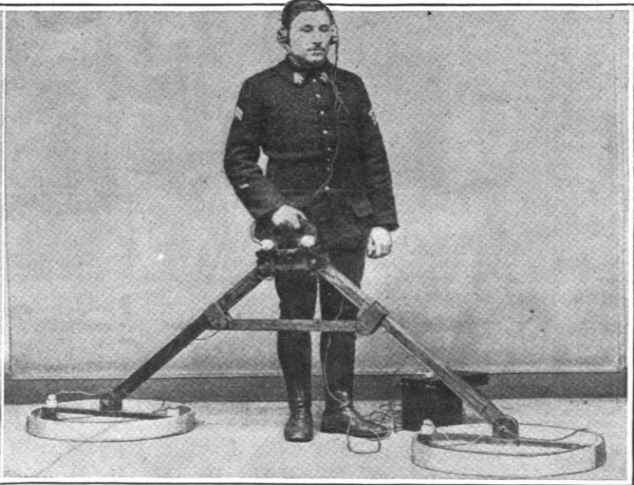This article is about the history of metal detectors, from the very first attempts at building something which can ‘detect’ metal through to the more sophisticated machines we use today detecting metal objects beneath the ground. As this article is lengthy I will post it as a four-part series.
Part 1
Chinese Detector
It is difficult to believe that 200 BC saw the first metal detector invented in China, yes, it’s true that a Chinese document indicates a metal detector was in use more than thirty years before the birth of Christ. A Chinese emperor had a doorway metal detector constructed to protect himself against any assassination attempt. His craftsmen built the doorway of a magnetic mineral called magnetite with the frame possibly built something like a horseshoe magnet through a combination of heating and striking the magnetite with hammers an attractor was created, the heating and jarring caused the molecules to align themselves in the direction of the Earth’s magnetic field, if a person attempted to carry an object such as armour, sword or metal weapon through the doorway these objects would be drawn against the doorway.
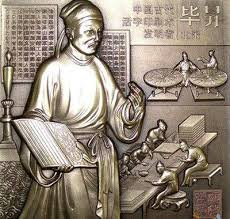
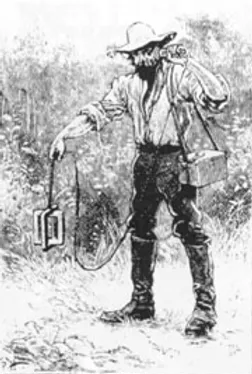
Metal Rod Detector
In the early 1800s many scientists and engineers used their growing knowledge of electrical theory in an attempt to devise a machine which would pinpoint metal. In 1830 English geologists and mining engineer RW Fox first discovered that electricity will flow through metallic ores as well as solid metal objects thus he devised a simple metal locator which consisted of nothing more than a battery, several metal rods and a suitable length of wire. His first method of detection was as follows, one metal rod will be driven into the earth where a suspected vein of ore was located. It was connected to one terminal of the battery the battery terminal is connected to a floating wire where all the metal rods were driven into the ground at several different places. If a spark occurred it was an indication that metal was present.
Induction Balance
In 1879 professor de Hugh’s demonstrated to the Royal Society in London his induction balance machine, Hughes and his instrument maker William Groves soon recognised the potential of the Induction Balance (IB) as a metal locator, this development was used in various London hospitals for locating metal objects in human bodies.
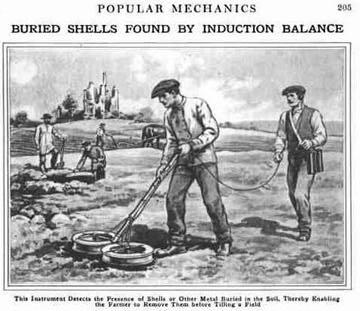

Electromagnetism
In 1881 the well-known American inventor George Hopkins modified an induction balance machine for locating buried treasures. in fact induction ballast forms the basis of most metal detectors today, did you know that early 1880s Alexander Graham Bell experimented with a metal detecting device, he studied the theory of electromagnetism previously demonstrated by Joseph Henry, the Induction Balance was also influenced by Bell’s previous experience in his home where he could hear the ticking of the clock while wearing a phone earpiece when a piece of metal was brought near the device reasons already deduced that the electric balance has been disturbed and this could be enough to detect a hidden metal object. He therefore studied these concepts and published new methods of exploring the field of induction. During July 1880 Alexander Graham Bell used such a device to attempt to locate a bullet lodged in the chest of American President James Garfield, the metal detector worked correctly but attempt was unsuccessful because the metal coil spring bed Garver was lying on confused a detector!
Alexander Graham Bell
Alexander Graham Bell in 1890 carried out a test to locate sulphides through the medium of conductivity using a telegraphic receiver connected in series with a battery and a wire brush. Electrical contacts were made in the earth and a brush was moved over the surface, in this way the brush will complete the circuit and gave a signal by a ‘click’ on the receiver. This method could only be used on exposed mineralised surfaces and so the method was of limited value.
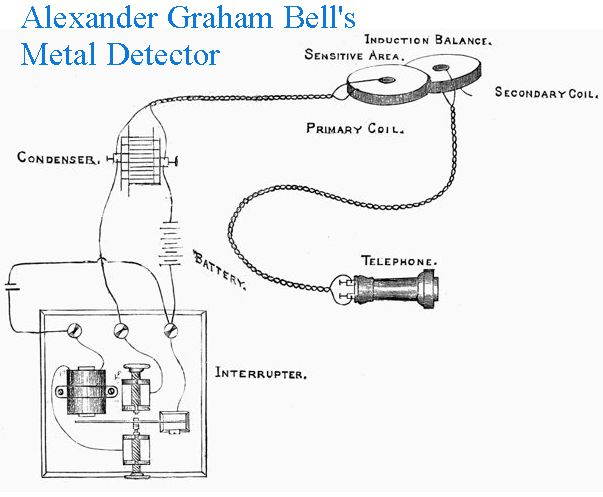
Thank you for reading our latest article on The History of Metal Detecting which is the first of a four part series. Please check back for more articles on this and other posts on metal detectors.

